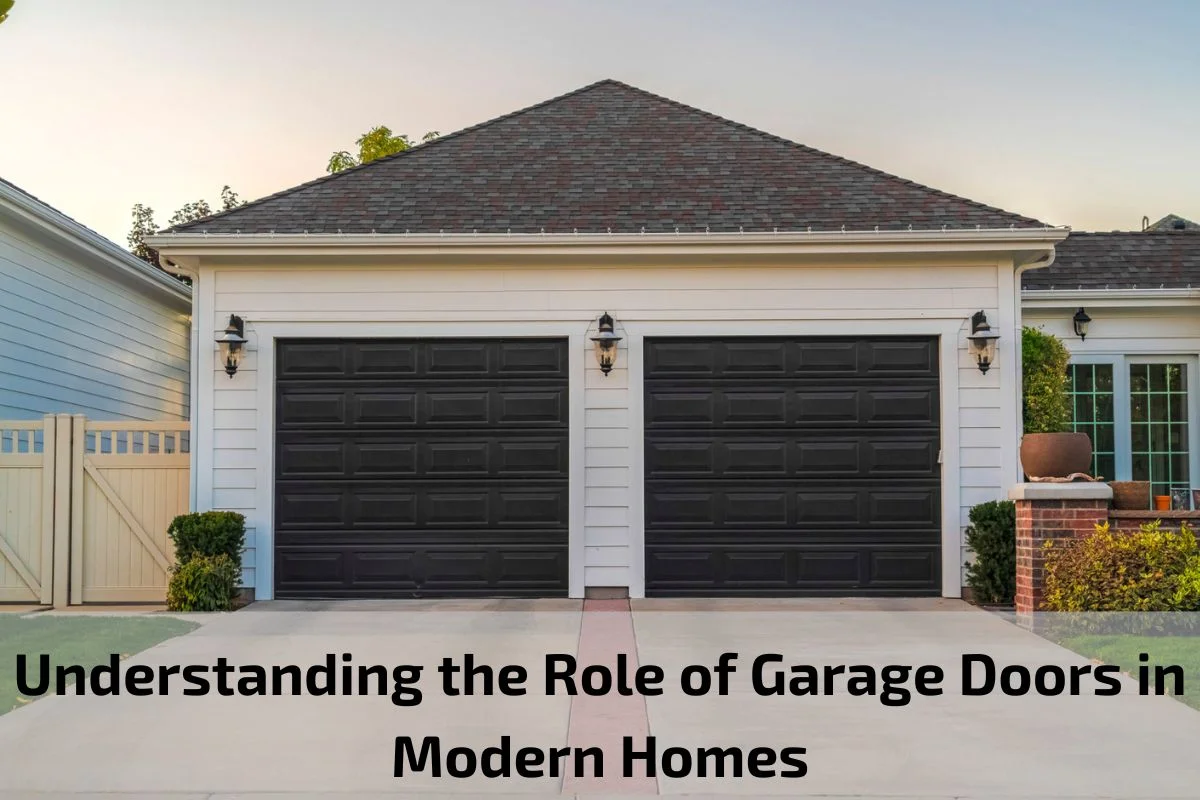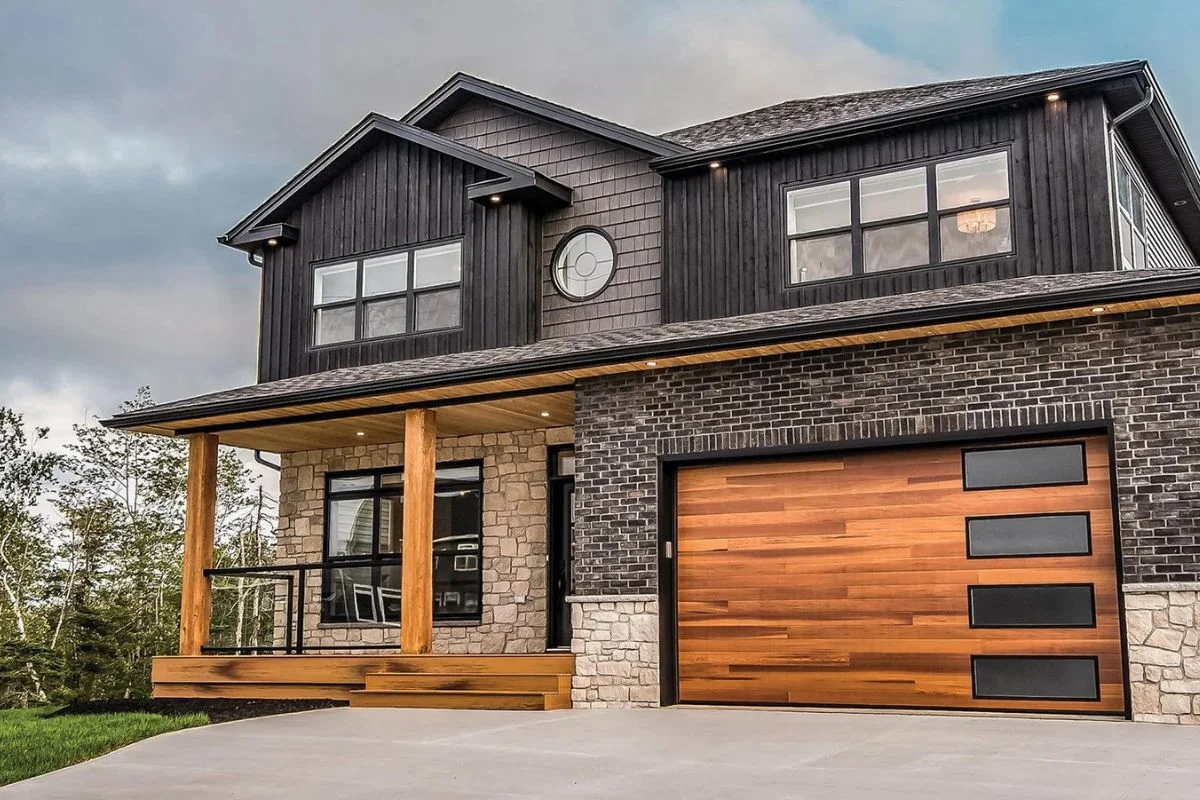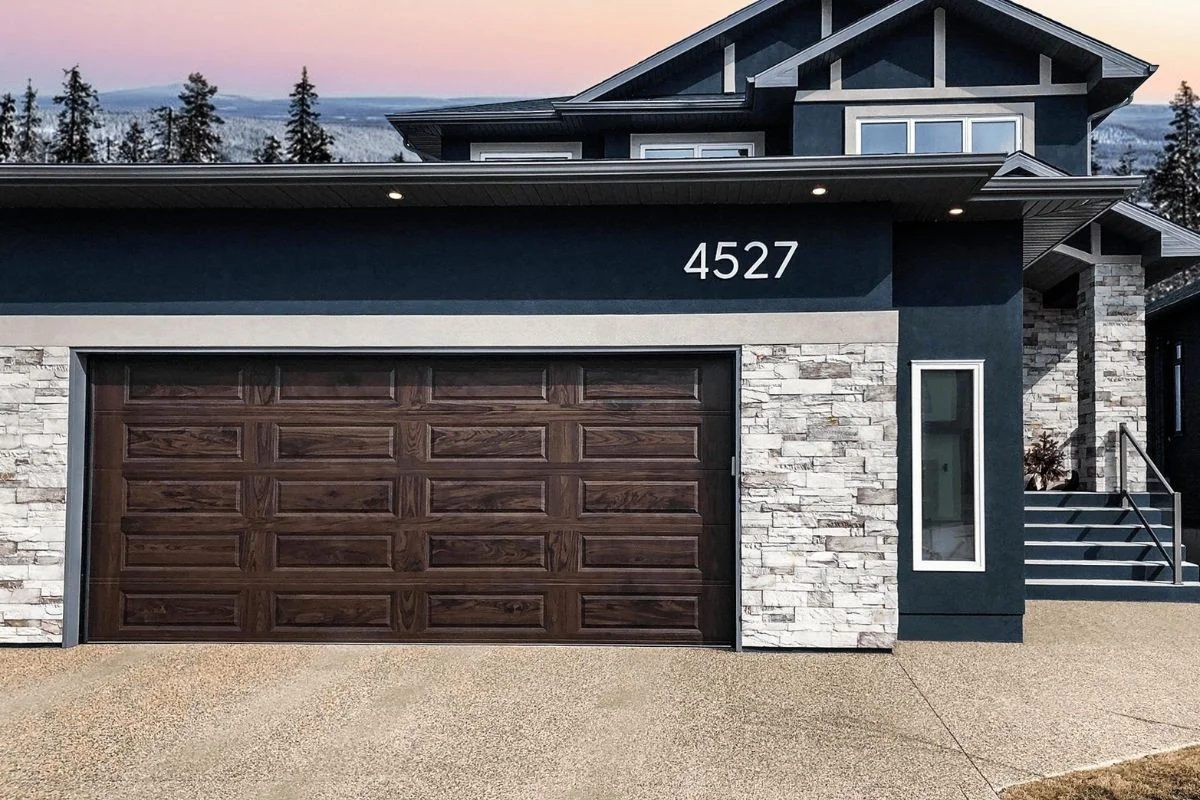
Garage doors have transitioned from mere functional elements to prominent features that significantly contribute to the aesthetics, security, and convenience of modern homes. Beyond providing access to garages, these doors play a crucial role in defining the exterior appearance and enhancing the overall functionality of residential properties. In today’s dynamic housing landscape, understanding the importance of garage doors is paramount for homeowners seeking to optimize both the practical and visual aspects of their living spaces. This article delves into the multifaceted role of garage doors in contemporary homes, exploring their evolution, design considerations, technological advancements, and indispensable features that cater to the diverse needs of homeowners.
Importance of Garage Doors in Modern Homes
Garage doors serve as essential components of modern homes, playing multiple crucial roles that go beyond mere functionality. Here are several reasons highlighting their significance:
Security: Garage doors act as the primary barrier between the interior of the home and the outside world, providing security against intruders, burglaries, and unauthorized access. A sturdy and well-maintained garage door adds an extra layer of protection to the property, safeguarding vehicles, tools, and other valuable items stored within the garage.
Curb Appeal: Garage doors significantly contribute to the overall aesthetic appeal and exterior design of a home. As one of the largest visible elements from the street, the style, color, and material of the garage door can greatly enhance the property’s curb appeal and create a lasting impression on visitors and passersby.
Functionality: Modern garage doors offer convenience and ease of use, allowing homeowners to access their garage space effortlessly. With various styles and opening mechanisms available, garage doors can be customized to suit the specific needs and preferences of homeowners, enhancing the functionality of the entire property.
Storage and Organization: Garages serve as versatile spaces for storage, hobbies, and additional living areas. Garage doors provide convenient access to these spaces, allowing homeowners to store vehicles, equipment, and belongings securely while maximizing the available storage capacity and maintaining organization within the home.
Weather Protection: Garage doors help shield the interior of the home from adverse weather conditions such as rain, snow, wind, and extreme temperatures. A properly insulated garage door can help regulate indoor temperatures, reduce energy costs, and protect vehicles and belongings from damage caused by harsh weather elements.
Types of Garage Doors
Garage doors come in various types, each offering unique features, styles, and functionalities to suit different homeowner preferences and architectural requirements. Here are some common types of garage doors:
Sectional Garage Doors: Sectional garage doors are among the most popular choices for modern homes. Comprising multiple horizontal panels hinged together, these doors open vertically and slide upwards along tracks parallel to the ceiling. Sectional doors are space-efficient, allowing vehicles to park close to the door without obstructing the opening mechanism.
Roller Garage Doors: Roller garage doors consist of a single curtain of horizontally rolling slats that coil around a drum mechanism located above the opening. These doors are ideal for properties with limited ceiling space or short driveways since they do not require tracks extending back into the garage. Roller doors are also known for their smooth and quiet operation.
Up and Over Garage Doors: Up and over garage doors feature a single panel that swings outwards and then upwards into the ceiling space when opened. Available in both canopy and retractable designs, these doors provide a classic and traditional look to homes. While canopy doors protrude slightly from the garage when open, retractable doors retract fully into the garage, offering improved security and weatherproofing.
Side-Hinged Garage Doors: Side-hinged garage doors operate similarly to traditional doors, swinging open from a vertical hinge located on one side of the opening. These doors are often made of wood or steel and offer convenient pedestrian access to the garage without the need to open the entire door. Side-hinged doors are popular for their timeless appearance and easy operation.
Slide to Side Garage Doors: Slide to side garage doors operate by sliding horizontally along tracks located on the interior walls of the garage. These doors are known for their smooth and quiet operation and are suitable for properties with limited headroom or ceiling space. Slide to side doors are available in various materials and styles to complement different architectural designs.
Choosing the Right Garage Door for Your Home
Selecting the perfect garage door for your home involves careful consideration of various factors, including aesthetics, functionality, durability, and budget. Here are some key steps to help you choose the right garage door:
Assess Your Home’s Architecture: Consider the architectural style and design elements of your home. Choose a garage door style and material that complements the overall aesthetic of the property, enhancing its curb appeal and visual appeal.
Determine Your Budget: Garage doors are available in a wide range of price points, depending on factors such as material, size, insulation, and design features. Determine your budget beforehand and explore options that offer the best value within your price range.
Consider Material Options: Garage doors are typically available in materials such as steel, wood, aluminum, fiberglass, and vinyl. Each material has its own advantages and considerations in terms of durability, maintenance requirements, insulation properties, and aesthetic appeal. Select a material that aligns with your preferences and maintenance capabilities.
Evaluate Insulation Needs: If your garage is attached to your home or used as a living space, consider investing in an insulated garage door. Insulated doors help regulate indoor temperatures, improve energy efficiency, and provide soundproofing benefits. Evaluate the insulation ratings and thermal performance of different door options to ensure optimal comfort and energy savings.
Choose the Right Size and Configuration: Measure the dimensions of your garage opening accurately to determine the required size and configuration of the garage door. Consider factors such as headroom, backroom, and side room clearance requirements to ensure smooth operation and proper installation.
Explore Design and Customization Options: Garage doors are available in a variety of designs, colors, finishes, and window configurations to suit different architectural styles and personal preferences. Explore customization options such as decorative hardware, window inserts, panel designs, and paint finishes to personalize your garage door and enhance its visual appeal.
Prioritize Safety and Security Features: Choose a garage door equipped with safety features such as automatic reversal mechanisms, photoelectric sensors, and rolling code technology to prevent accidents and unauthorized access. Opt for sturdy materials and robust locking mechanisms to enhance the security of your home and belongings.
Advantages and Disadvantages of Different Garage Door Materials
Garage doors are available in various materials, each with its own set of advantages and disadvantages. Understanding the characteristics of different materials can help homeowners make informed decisions when choosing the right garage door for their home. Here’s an overview of the advantages and disadvantages of common garage door materials:
Steel Garage Doors: Advantages:
- Durable and long-lasting, offering excellent resistance to dents, cracks, and warping.
- Low maintenance requirements, often requiring only occasional cleaning and painting.
- Available in a wide range of styles, colors, and finishes to suit different architectural designs.
- Generally more affordable compared to other materials.
Disadvantages:
- Prone to rust and corrosion if not properly maintained, especially in humid or coastal environments.
- Susceptible to scratches and surface damage, which may require touch-ups or repainting over time.
Wood Garage Doors: Advantages:
- Natural aesthetic appeal, providing warmth, charm, and character to the home’s exterior.
- Can be customized with intricate designs, carvings, and decorative hardware for a unique look.
- Offers excellent insulation properties, helping to regulate indoor temperatures and reduce energy costs.
Disadvantages:
- Requires regular maintenance, including staining, sealing, and repainting to protect against weathering and moisture damage.
- Prone to warping, splitting, and rotting over time, especially in humid or rainy climates.
- Generally more expensive than other materials, both in terms of upfront costs and long-term maintenance.
Aluminum Garage Doors: Advantages:
- Lightweight and corrosion-resistant, making them ideal for coastal or humid environments.
- Available in a variety of styles and finishes, including faux wood grain options for a natural look.
- Low maintenance requirements, requiring minimal cleaning and occasional lubrication of moving parts.
Disadvantages:
- Less durable compared to steel or wood doors, susceptible to dents and scratches.
- Limited insulation properties, which may result in higher energy costs and reduced thermal efficiency.
- Can be more expensive than steel doors, especially for custom designs or premium finishes.
Fiberglass Garage Doors: Advantages:
- Highly resistant to dents, cracks, rust, and corrosion, making them ideal for harsh climates.
- Available in a variety of colors and finishes, including wood grain textures for a natural appearance.
- Lightweight and easy to install, reducing strain on the garage door opener and tracks.
Disadvantages:
- Limited availability and higher cost compared to other materials.
- Susceptible to fading and discoloration over time, especially when exposed to direct sunlight.
- May not offer the same level of insulation as other materials, potentially leading to higher energy bills in extreme temperatures.
Garage Door Maintenance Tips
Proper maintenance is essential to ensure the longevity, functionality, and safety of your garage door. Here are some helpful maintenance tips to keep your garage door in top condition:
Regular Visual Inspection:
- Conduct a visual inspection of your garage door and its components, including springs, cables, rollers, tracks, and hinges, at least once a month.
- Look for signs of wear and tear, damage, rust, or corrosion. Replace any worn-out or damaged parts promptly to prevent further issues.
Lubrication:
- Apply lubricant to the moving parts of your garage door, such as rollers, hinges, springs, and tracks, every six months or as needed.
- Use a silicone-based lubricant to ensure smooth and quiet operation without attracting dirt and debris.
Tighten Hardware:
- Regularly check and tighten the hardware, including bolts, nuts, and screws, on your garage door and its tracks.
- Loose hardware can cause misalignment and affect the performance of your garage door.
Test Safety Features:
- Test the safety features of your garage door, including the auto-reverse mechanism and photoelectric sensors, on a regular basis.
- Place an object, such as a piece of wood, in the path of the closing door to ensure that it reverses direction upon contact.
Clean and Maintain Tracks:
- Keep the tracks of your garage door clean and free of debris, dirt, and obstructions.
- Use a soft brush or cloth to remove any buildup of dirt or grime from the tracks. Avoid using harsh chemicals or abrasive cleaners that could damage the tracks.
Keep Weather Stripping Intact:
- Inspect the weather stripping along the bottom of your garage door for signs of wear, cracking, or deterioration.
- Replace damaged weather stripping to prevent drafts, moisture, and pests from entering your garage.
Maintain Paint and Finish:
- Keep the exterior of your garage door clean and well-maintained by washing it with mild soap and water regularly.
- Touch up any scratches, chips, or peeling paint to protect the door from rust and corrosion.
Schedule Professional Inspection:
- Consider scheduling an annual maintenance inspection by a professional garage door technician
Conclusion
Regular maintenance is crucial to ensure that your garage door remains safe, functional, and reliable for years to come. By following the maintenance tips outlined in this article, you can proactively address issues, prevent costly repairs, and maintain the overall integrity of your garage door system.


